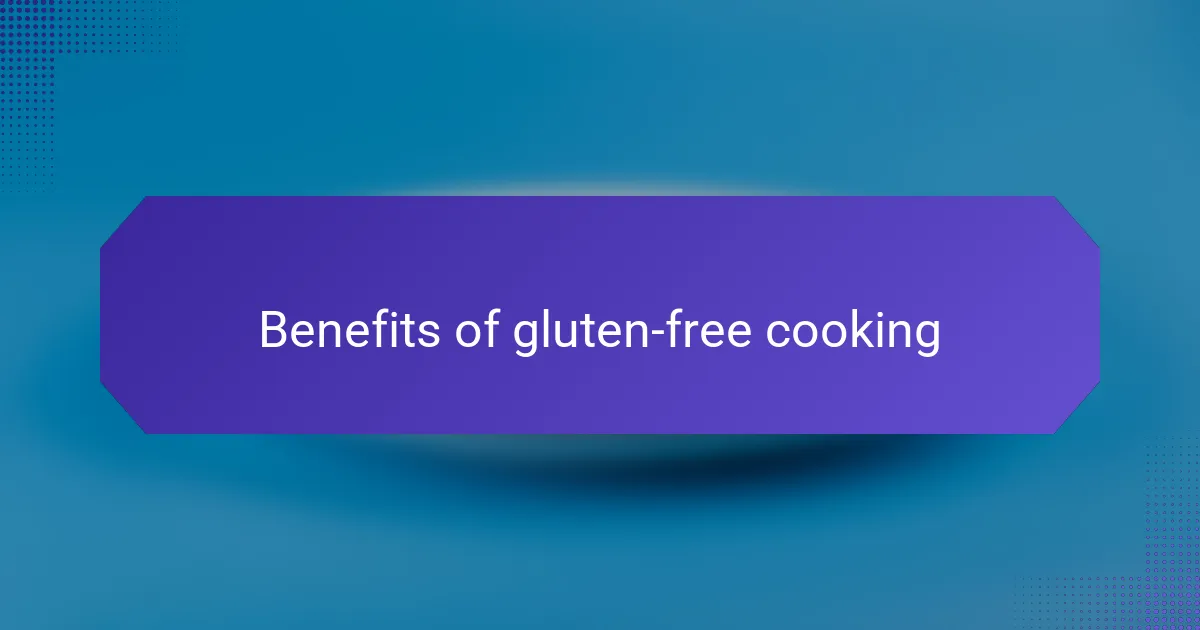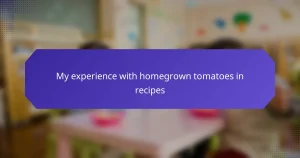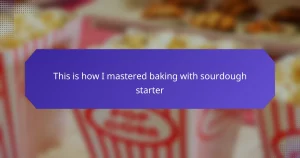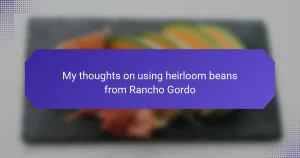Key takeaways
- Gluten-free flour is an essential alternative for individuals with celiac disease or gluten sensitivities, requiring experimentation for optimal results.
- Cup4Cup flour closely mimics wheat flour, allowing for easy substitutions in recipes while maintaining similar taste and texture.
- Embracing gluten-free cooking expands ingredient variety, enhances mindfulness about food choices, and fosters community through shared recipes.
- Accurate measurements, the use of binding agents, and adding moisture are key tips for successful gluten-free baking.

What is gluten-free flour
Gluten-free flour is an alternative to traditional wheat flour, designed for those with celiac disease or gluten sensitivities. I distinctly remember the first time I ventured into using gluten-free flour; I was both excited and a bit apprehensive. The texture and flavor can vary significantly from regular flour, so experimenting is key to finding what works best for your recipes.
From my experience, gluten-free flour blends, like Cup4Cup, mimic the properties of wheat flour quite well, making them versatile for many recipes. Initially, I struggled with gummy textures in my baking, but once I understood the importance of moisture and binding agents, my results improved tremendously. This journey opened up a whole new world of culinary creativity for me.
| Type of Flour | Flavor |
|---|---|
| Wheat Flour | Mild, slightly nutty |
| Gluten-Free Flour (Cup4Cup) | Neutral, slightly sweet |

Benefits of gluten-free cooking
When I first started gluten-free cooking, I discovered a newfound appreciation for diverse ingredients. I began experimenting with a variety of grains and flours, which not only expanded my palate but also introduced exciting flavors and textures to my meals. Have you ever tried baking with almond flour or coconut flour? The results can be deliciously surprising!
Another benefit I noticed was the way gluten-free cooking prompted me to be more mindful of my food choices. It pushed me to read labels and learn about substitutes that I might have otherwise overlooked. This exploration led me to rediscover fresh fruits and vegetables, which enriched my diet and made cooking feel like a wonderful adventure.
Lastly, gluten-free cooking often fosters a sense of community. Sharing gluten-free recipes with friends and family created a bond over our mutual experiences and challenges, making gatherings more inclusive. I remember hosting a dinner party where everyone, regardless of dietary preferences, could enjoy the food—what a rewarding feeling!

Introduction to Cup4Cup flour
Cup4Cup flour is a trusted name among gluten-free baking enthusiasts, known for its unique formulation that closely resembles all-purpose wheat flour. I recall the excitement I felt when I first came across this blend; it promised the convenience of a one-to-one substitution, which made my baking adventures feel much less intimidating. It’s reassuring to know that you can reach for Cup4Cup and achieve similar textures and flavors that you’d typically expect from traditional flour.
What sets Cup4Cup apart is not just its versatility, but also how it manages to maintain a neutral, slightly sweet flavor profile. When I first tried it in a batch of chocolate chip cookies, I was pleasantly surprised by how well it held up against its wheat counterpart. Isn’t it fascinating how a simple swap can lead to such vibrant, delicious outcomes without compromising taste?
As I explored more with Cup4Cup, I found that it has been a game changer for holiday baking. The ability to create gluten-free versions of family favorites like pumpkin pie or chocolate cake allowed me to share those delights with everyone, regardless of dietary restrictions. Can you imagine the joy of seeing everyone enjoy the same dessert without worry? That shared experience made my baking journey with Cup4Cup not just personal, but truly communal.

My gluten-free cooking journey
Embracing a gluten-free lifestyle has been a transformative journey for me. When I first started experimenting with gluten-free cooking, I felt a mixture of excitement and apprehension. I recall trying to bake cookies for the first time without traditional flour and thinking, “Will they even turn out edible?” The results were surprisingly delightful, and that moment sparked a passion for exploring more gluten-free recipes.
Over time, I discovered the versatility of gluten-free flour, particularly Cup4Cup, which quickly became a staple in my kitchen. Here are some highlights from my journey with it:
- Effortlessly substitutes for regular flour in most recipes, making it a breeze to adapt favorites.
- Holds moisture exceptionally well, resulting in baked goods that are soft and tender.
- Minimal adjustment needed for baking times and temperatures, which saved me from countless frustrations.
- The taste and texture are remarkably similar to traditional flour, making it easier to please my non-gluten-free friends.
- Opened up a world of new recipes for me to explore, from fluffy pancakes to rich brownies.

Recipes to try with Cup4Cup
Imagine biting into a warm slice of gluten-free banana bread that’s both moist and flavorful. That was my experience when I first used Cup4Cup in my recipe. The secret is letting the bananas ripen until they’re speckled with brown spots—the sweetness combined with Cup4Cup’s properties create a comforting and satisfying treat. Have you ever baked something that just warms your heart? This bread did that for me.
Another recipe that became a game changer in my kitchen is gluten-free pizza. Using Cup4Cup, I was able to achieve a crispy, delicious crust that rivals any pizza I’ve had. I remember the excitement when my friends bit into it, and the look of surprise on their faces when I revealed it was gluten-free. It’s moments like these that remind me how cooking can truly bring us together, regardless of dietary restrictions.
And let’s not forget about cookies—who doesn’t love cookies? I tried making snickerdoodles with Cup4Cup, and they turned out perfectly chewy with just the right amount of cinnamon. I recall setting them out for a gathering and watching as everyone reached for seconds. It’s that joy of sharing food that fuels my passion for gluten-free baking. Have you experienced the thrill of watching others enjoy something you’ve created? Those moments are priceless.

Tips for using gluten-free flour
When using gluten-free flour, one of the best tips I can share is to ensure you measure it accurately. Gluten-free flour can be denser than wheat flour, so using weight measurements instead of volume can make a significant difference in your final product. Did I ever mess this up? Absolutely! I recall a time when I didn’t level off the flour correctly, and my cookies turned out flatter than I expected. Lesson learned!
I also find that incorporating binding agents, like xanthan gum or flaxseed meal, can transform your gluten-free baked goods. These ingredients help provide that structure which gluten typically offers in traditional baking. The first time I added xanthan gum to my cake batter, I was amazed at how the texture turned out—it was incredibly moist and held together beautifully. Have you ever experienced such a drastic change just by adding one ingredient?
Lastly, don’t be afraid to embrace moisture in your recipes. Gluten-free flours often require more liquids, whether it’s additional eggs or a splash of milk. I remember feeling hesitant about adding extra liquid when I was making muffins, but it ended up yielding a deliciously fluffy result. It’s always rewarding to push those boundaries and discover what works best for gluten-free baking!


